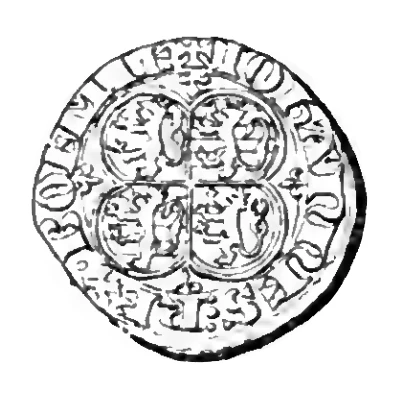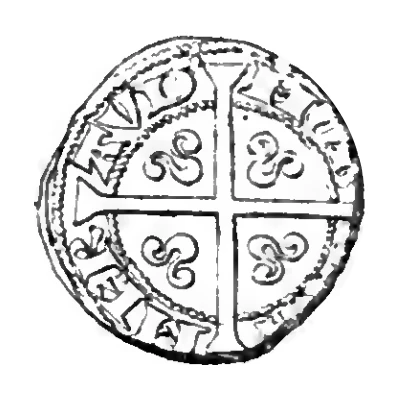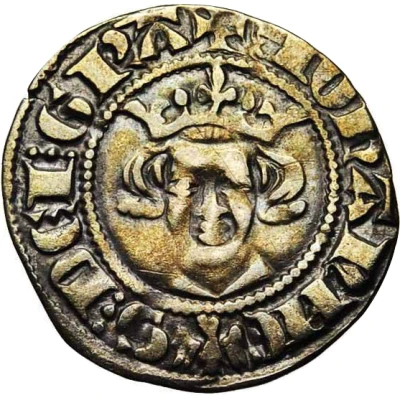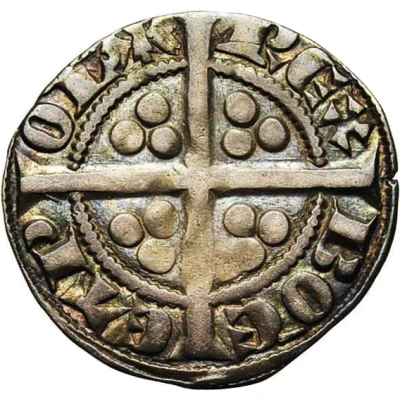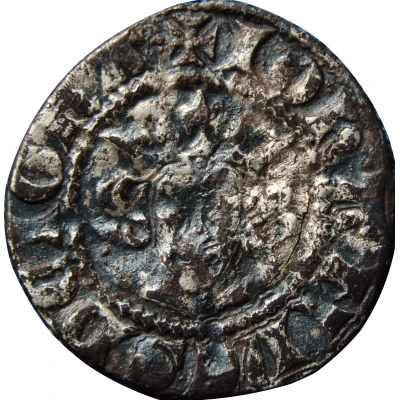
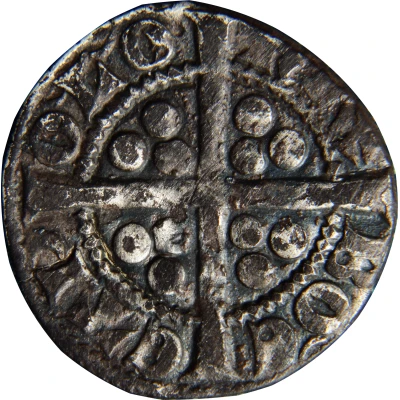

© smy77 (CC BY-NC-SA)
Sterling - John the Blind ND
| Silver | 1.33 g | 17.8 mm |
| Issuer | County of Luxembourg (Luxembourg) |
|---|---|
| Count | Jean the Blind (1310-1346) |
| Type | Standard circulation coin |
| Years | 1309-1333 |
| Value | Sterling (1⁄60) |
| Currency | Livre Tournois (963-1353) |
| Composition | Silver |
| Weight | 1.33 g |
| Diameter | 17.8 mm |
| Thickness | 0.62 mm |
| Shape | Round (irregular) |
| Technique | Hammered |
| Orientation | Variable alignment ↺ |
| Demonetized | Yes |
| Updated | 2024-10-06 |
| Numista | N#83497 |
|---|---|
| Rarity index | 93% |
Reverse
Long patted cross, freezes, dividing the legend, cantoned with four groups of three globules. Legend between two pearled circles.
Script: Latin
Lettering: REX BO˘E ETP O˘L˘O
Translation: ... King of Bohemia and Poland.
Edge
Plain
Comment
This rare, undated esterlin is part of the imitations of English pieces, struck under Jean the Blind who was known as an illustrious forger. They were imported massively into England, and caused great harm."Of low weight and alloy, the John the Blind esterlins ended up seriously threatening the economy of England" (Weiller, p. 23). "The people (English) soon referred to them as "lushbournes" or "lussenburgers" (BV, p. 100)
Of the 36 pieces listed by Weiller, 17 are in medal cabinets in England (8 in Luxembourg). 13 coins found during treasure discoveries, including 12 in England.
John the Blind dominated a small part of Poland (Silesia) and claimed the title of King of Poland.
The reason why he calls himself King of Poland P O˘L˘O on the piece of this sheet. The true King of Poland, Casimir III the Great, paid him on August 24th, 1333, a considerable sum of 20,000 marks of silver, solely to obtain from him that he cease to adorn himself with that title. It is therefore certain that this type was struck before that date (BV, p. 94)
Average weight of 32 pieces: 1.33 g. ( Weiller, p. 26)
Extreme weight: 1.01 g. (personal measurement) and 1.55 g. ( BV, p. 111 )
Variants of the legend and punctuation:
Obverse (6):
a. +IOhANnES DEI GRA' (e closed, sometimes И instead of N)
b. +IOhANnES DEI GRA (e open)
c. +IOnAИnES DEI GRA' (e open)
d. +IOhANnES: DEI: GRA' (e closed)
e. +⋮IOhAИnES DEI GRA (e closed)
f. +IOhAnNE: S⋮ DEI⋮ GRA' (e open)
Reverse (5):
a. REX BO˘E ETP O˘L˘O (e closed)
b. REX BOE ETP OLŌ (e closed)
c. REX BO˘E ETP O˘L˘O (e open)
d. REX BOˆE ETP OˆLˆO (e closed)
e. REX BOE ETP OLO (e open)
Nine different combinations identified.
Some sales:
Interesting fact
One interesting fact about this coin is that it was minted during the reign of John the Blind, who was the Count of Luxembourg from 1309 to 1333. Despite being blind, John the Blind was known for his military prowess and political acumen, and he played a significant role in the politics of the Holy Roman Empire during his lifetime.
